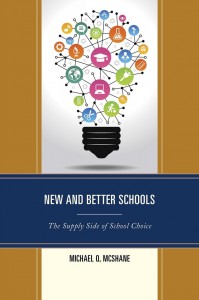 For the past two decades, hundreds of thousands of mostly disadvantaged students have enrolled in private school choice programs, usually seeing some improvement in their academic outcomes while saving taxpayers money.
For the past two decades, hundreds of thousands of mostly disadvantaged students have enrolled in private school choice programs, usually seeing some improvement in their academic outcomes while saving taxpayers money.
But the programs have yet to create the kind of systemic transformation sought by proponents of market-based education reform. As Michael McShane writes in the opening chapter of New and Better Schools: the Supply Side of School Choice (which he edited): "Arguing that performing marginally better than struggling public schools is a victory is defining success down."
The volume, released late last year, and an earlier symposium at the American Enterprise Institute, reflect a growing sense among school choice proponents that simply giving students access to private schools that may previously have been out of reach won't, on its own, create the kind of quality and efficiency improvements they say the education system urgently needs.
For the forces of creative destruction to drive real improvements in education, the thinking goes, more high-quality schools need to open — the faster, the better. Creating an environment where new private schools can thrive will require new forms of school financing, new teacher education programs to train a new breed of entrepreneurial educators, and a new approach to school regulation.
Whether you agree with the framing analysis or not, the volume may offer a window into the parental choice debates of tomorrow. Contributors contemplate schools financed by investors who only get paid if they improve student outcomes, private school networks that draw lessons from the best public charter schools, and programs that give parents accounts they can use to shop not just among a range of different education providers to create a customized learning plan for their children.